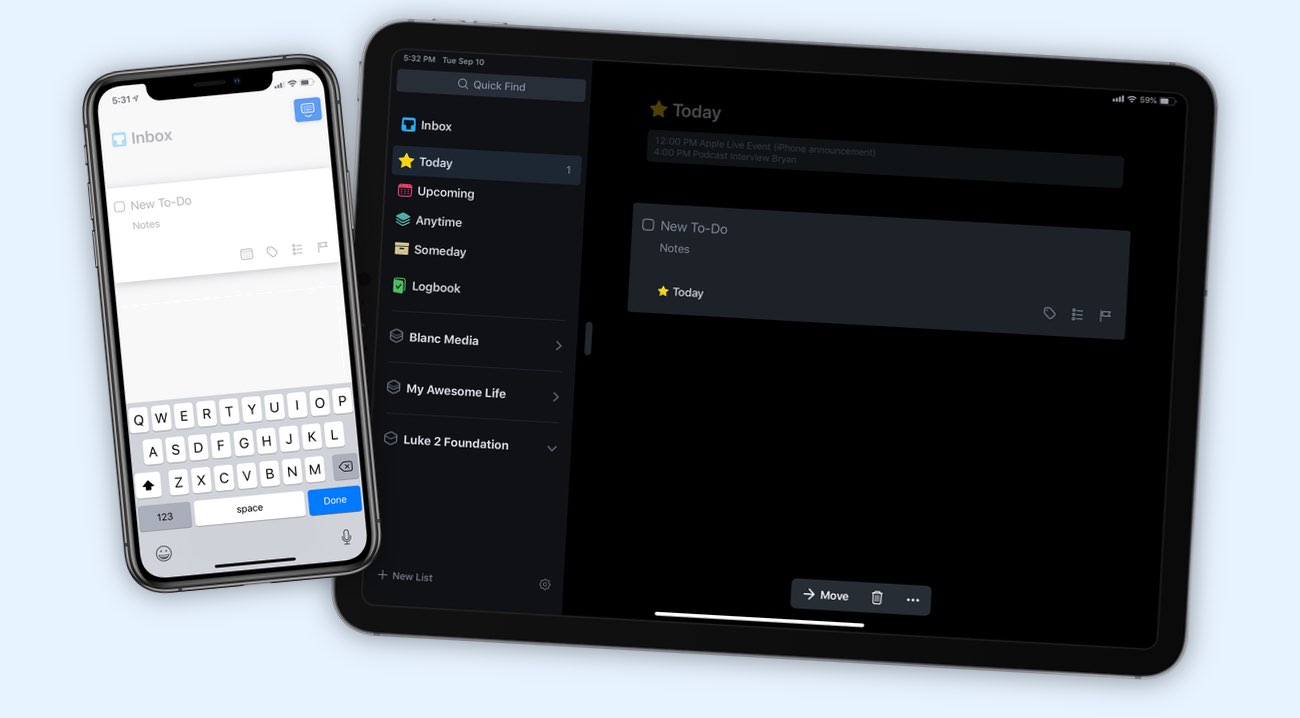Getting to Doing

It’s a sad truth: I enjoy organizing my work more than doing it.
One of the traps — perhaps the biggest trap — of GTD and frameworks like GTD is to spend all your time on your system rather than on your important work. It can be easy to twiddle the knobs, review your process, and incessantly tweak how you organize your work. But eventually, you have to do the work itself.
Here are a few ways to help yourself move from organizing to the actual doing.
Bonus! One more thing…
The Complete Guide to Managing Tasks in Things (Video)
If you struggle to keep up with all your tasks, we can show you some organization tips that may help you.
We put together a video that shows you everything you need to know about a task in Things:
- The difference between start dates and due dates and how to use them effectively.
- How to set up reminders so you never forget an important task again.
- How to use checklists for tasks that require more than one step.
- How to configure daily, weekly, monthly, or even annual repeating tasks.
- And more…
You don’t have to use any of these things in your tasks if you don’t want to. But knowing what they are and how they all work will help you be more organized, save time, and ensure you are using Things in the way that suits you best.

This video is something we have made available for free to our email subscriber community. You can get it right now. By joining the Sweet Setup community you’ll also get access to other guides, early previews to big new reviews and workflow articles we are working on, weekly roundups of our best content, and more.
Keep it simple
This is good advice for most things in life, but it certainly applies to managing your tasks. If your system is overly complex, you’re more likely to spend time tweaking it. There have been times when I cannot even remember how a specific workflow I’d set up was supposed to work. Keeping a minimal list of tools and consistent usage goes a long way to be efficient.
One bonus for simplicity is that it’s easier to move to a new tool. Constantly switching from one task management task to another is a habit to avoid, but it will happen from time to time. And five year goals with complex plans to achieve them can be hard to move. A sparse list of projects and areas of responsibility is far easier to migrate.
Reduce the tools in your toolbox
Related to the last point, let’s talk about that minimal list of tools. In Getting Past Collection, I mentioned reducing the number of buckets. That same logic applies to doing your work the same as it does for processing, planning, and reviewing. The lower the number of places where you store your work, the better.
If you’re a freelancer, you are in full control. But if you’re on a team, you may be required to have more than one place where your projects and tasks live. Myself, as a member of a remote team, I make sure I have no more than two services where my work is stored and organized. Things is for my entire life, including some of my Wildbit tasks. And Basecamp is where our team shares project organization.
Anything more than that and I start to lose my ability to maintain a sense of calm when thinking about my work.
Reduce friction
When all the collection, organization, and planning is complete, make it as easy to get started as possible. It’s hard to start work with a cluttered desk, so clean it at the end of each day. If you want to start the day with morning pages, put out your notebook and pen of choice once the desk is clean. If you often spend 30 minutes in the morning deciding what to work on each day, write out a note card the night before with your three most important tasks for the next day.
The inverse of this is also true. If email is a consistent source of distraction that stops you from doing work that matters, use software that blocks your mail client until noon each day.
Organize with clarity
This last point is twofold and related to the previous one.
First, you are adding friction and making it harder to get started if you do not plan with clarity. If you start the day with a notecard of your three most important tasks and they are something like “Refresh website for 2018,” you’re in trouble. That’s a project with multiple steps, and you’ll be spending time deciding what you should do and when, instead of just doing.
As much as possible, break down projects into the smallest tasks possible, and create those tasks as concrete actions.
The second aspect of clarity is to “remember your why.” Why do you do what you do? What about your work excites you? Why have you chosen the projects in your system? If you can’t answer these questions, it might be time for some reflection.
This is a big part of my weekly review — I look over my life goal document and review my primary goals for the year to ensure I’m spending my time each week on the things that matter most to me.
The purpose of GTD and other tools is twofold: to help you do your work well and to give you peace of mind. If your current ways of working are not providing both, something is amiss.
Our brand new course, All The Things, is now available. The course not only breaks down how to use Things on the Mac, iPhone, and iPad, it also provides a plethora of tips and tricks for all sorts of productivity systems, from analog to hybrid. If you’re interested in making sure your productivity tools are working for you, check out our new course here to get started.
